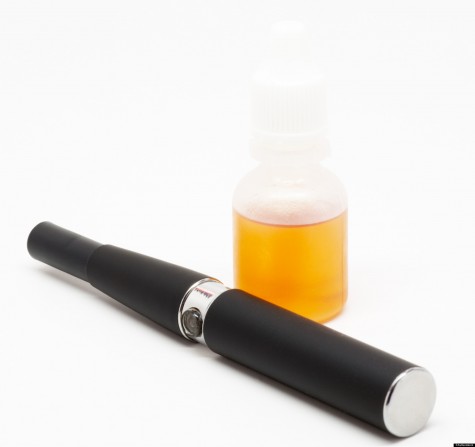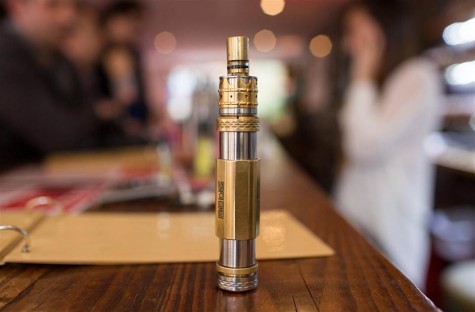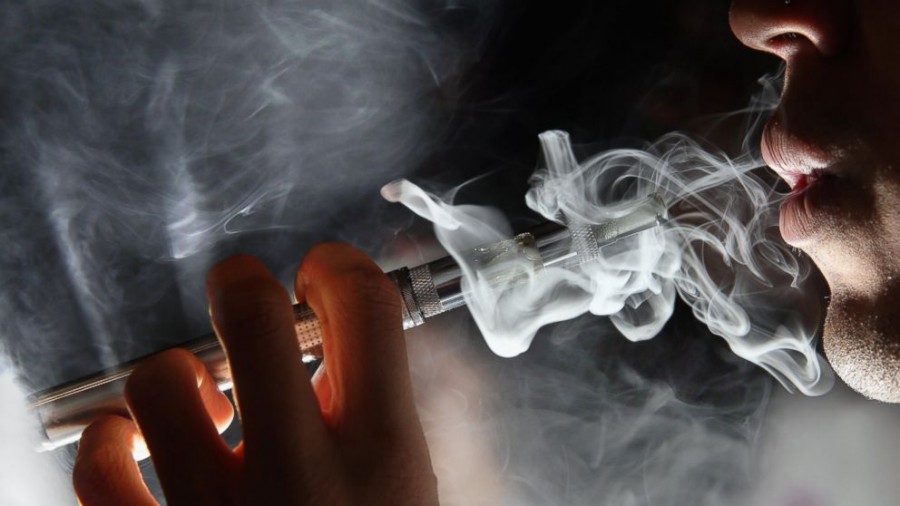The truth about vape pens
April 30, 2015
E-cigarettes or vape pens have been under plenty of scrutiny in recent years, but no one really knows what’s in them. Are they really as safe or as dangerous as people say? Here are the facts:
Vaping is legal for people over 18 anywhere in the U.S. where smoking is legal, and some places where it is not. While many argue that the ingredients in e-juice is a mystery, the exact ingredients in all vape juice are open to the public.
There are four ingredients in any e-juice: vegetable glycerin, propylene glycol, the flavoring in the nicotine and distilled water for dilution. Other than these ingredients, some specific e-juices may have additives that you will have to research separately.
Some possible side effects of vaping are dry skin, dry mouth, rash, itchiness, dry eyes and caffeine sensitivity. Most users experience no side effects at all and many of them can only be seen with a high-nicotine-percentage e-juice.

Vegetable glycerin, commonly known as VG, is used in all types of foods and personal care items. VG can either be synthetic or derived from plants. It is typically used as a solvent, sweetener, food preservative, filter for low-fat foods and a thickening agent in liqueurs. In many cases, glycerin is used as a sugar substitute and is 60% as sweet as sucrose, but does not feed bacteria that causes tooth decay. It is also added in icing to prevent it from setting too hard.
The truth about this ingredient’s presence in wiper fluid isn’t as shocking as one may think. While glycerin was historically used in antifreeze for automobiles, it was replaced by ethylene glycol (EG), which has a lower freezing point. Unlike EG, VG is considered nontoxic and is approved by the Food and Drug Administration (FDA). Most major manufacturers of e-juice use certified, organic VG.
Propylene glycol (PG) is also an organic compound. It is colorless and odorless, but possesses a faintly sweet taste. PG is thinner than VG and carries much of the flavoring. Propylene glycol is generally used in preserving food and tobacco products, and can be found in food items such as coffee, ice cream and soda. It is important to note that PG can cause dry mouth and mild allergic reactions to some users. A higher concentration of PG produces thicker clouds when vaporized.
Propylene glycol and ethylene glycol are both able to lower the freezing point of water and are used in de-icing fluid or antifreeze, but PG is often used as a substitute for EG because of its low toxicity. The toxicity of PG when ingested is very low, making it nearly impossible to consume a fatal amount. Propylene glycol was classified by the FDA as “generally recognized as safe” (GRAS) for use as a direct food additive.
There is a 100% VG juice available in most vape stores to avoid any allergic reactions caused by PG. The VG and PG mix makes up 80-90 percent of e-juice. The rest is flavoring, nicotine and distilled water.
The flavoring makes up 10-20 percent of the vape juice and is food-grade flavoring originally used for baking or candy making. The flavoring can be natural or artificial, but the artificial flavoring is viewed as safer because of the standards of purity set on the companies that produce the flavoring. The flavoring is seen as the least harmful of the major ingredients of e-juice.
Nicotine makes up 0-2.4 percent of e-juice. Any large supplier of fluid for vaporizers provides pharmaceutical-grade nicotine, and all vape stores make it available in varying nicotine strengths. Nicotine is arguably the most controversial and dangerous ingredient in e-juice. They range from 36 milligrams per milliliter (.0013 ounces per .0038 fluid ounces) to no nicotine at all. Juices with a lower concentration of nicotine are favored among e-juice buyers. According to the FDA in 2013, it is very unlikely for a person to overdose by using products containing nicotine. While nicotine can increase blood pressure and heart rate in first-time users, fatality is rare. To avoid the chance of any nicotine-related health risks, zero-nicotine e-juice is often bought. This takes away most of the danger associated with vaping.

Some users report feelings of relaxation, sharpness, calmness and alertness when using products that have nicotine, however, repeated daily exposure can cause addiction. For any young people who plan on using vape pens, the Center for Disease Control states that nicotine harms the developing brain.
Although the analysis of the ingredients in e-juice point vaping towards being healthier than any other drugs or cigarettes, the benefits and risks of vaping are still very uncertain. Very little research has been done on the long-term effects of vaping, and because e-cigarettes are so new, they are not completely apparent.
“E-cigarettes have not been fully studied, so consumers currently don’t know the potential risks of e-cigarettes when used as intended, how much nicotine or other potentially harmful chemicals are being inhaled during use, or whether there are any benefits associated with using these products,” according to the FDA.
The FDA has authority to regulate e-smokers and is slowly taking steps towards regulating the sale of vaping products, but there haven’t been many regulations put in place yet.
Those who don’t vape do not have much to worry about, however, according to BBC News. There are no harmful effects of inhaling vapor from a pen in passing, as there is with secondhand smoke.
Although some see vape pens as a very mysterious product filled with many unknown ingredients, this is not the truth. There are four main ingredients to any vape juice and can be bought without nicotine or propylene glycol, the potentially harmful substances. Any known dangers in e-juice can be avoided by anyone who doesn’t want to take any risks. Now, the real question: is using vape products worth it when there are unknown long-term effects?








